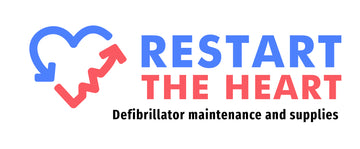How to Tell When Your AED Needs New Pads
AEDs, or Automated External Defibrillators, are life-saving devices designed to provide a crucial shock to the heart during cardiac emergencies. These portable machines are a key component in a comprehensive emergency response plan, available for use by people with minimal medical training. Their simplicity and effectiveness make them an essential tool for increasing survival rates in cases of sudden cardiac arrest, both in public spaces and at home.
The pads of an AED play a vital role in its function. They are the conduits between the machine and the patient's heart, delivering the electric shock that can potentially restore a normal heartbeat. Proper functioning of these pads is essential, as worn-out or expired pads may not adhere effectively, leading to poor conductivity and potentially compromising the AED's ability to save lives.
Signs Your AED Pads Need Replacing
Keeping your AED pads in tip-top shape assures that they're ready to do the job when needed. Here’s how to tell when they're due for a swap:
1. Visible Wear and Tear: Over time, pads can show signs of wear such as creases, tears, or dirt that might affect their performance.
2. Expiry Date: All AED pads come with an expiry date. It's your safety cue that the adhesive and conductive gel might degrade after a certain period, even if they look fine.
3. Adhesive Quality: Pay attention to the stickiness of the pads. Pads that don't adhere properly won't deliver a shock effectively.
4. Connectivity Issues: If you notice connection faults or if the AED gives alerts about pads during its self-check, it’s time to replace them.
By recognising these signs, you ensure that the AED is always ready for action. Regularly checking and maintaining the AED pads helps prevent any last-minute surprises, ensuring peace of mind.
Regular Check-Ups and Maintenance
Checking your AED pads regularly is key to making sure they work when you need them most. It's a good idea to schedule routine inspections at least once every three to six months. This doesn't have to take long. Start by scanning for obvious signs of damage like tears or dirt. If your AED has a test feature, run it to check for any issues at the technical level.
Once you've done a visual inspection, give a gentle tug on the pads to test their adhesive strength. If they don't seem sticky enough, it's time to get new ones. Jotting down these checks in a log helps keep track of when you last replaced pads and batteries. Keeping such a record is useful for remembering when the next check is due, ensuring that the AED remains reliable.
Steps to Replace AED Pads
Replacing AED pads is straightforward, and it's something you can do without much fuss:
1. Turn Off the AED: Before doing anything, make sure the device is switched off to avoid any accidental shocks.
2. Remove Old Pads: Gently peel off the used pads from the AED. Make sure there's no residual adhesive left on the connectors.
3. Attach New Pads: Open the new pack and carefully follow the instructions included. Align the pads correctly over the connectors and press firmly to ensure good contact.
4. Store Spares Properly: It's always a good idea to have a backup set of pads. Store them in a cool, dry place where they're easy to get to.
Proper storage of spare pads means they're always ready to be used in an emergency, reducing stress and confusion.
Benefits of Timely Replacement
Timely replacement of AED pads guarantees that your defibrillator can do its job when seconds count. Having fresh, functional pads ensures the device is ready to deliver a shock right away, which can be life-saving. Prompt replacement isn't just a good practice; it's about being responsible.
It's reassuring to know that the AED is fully functional and will operate effectively when needed. A functioning AED contributes significantly to peace of mind because it enhances safety in any environment, whether at home or in a public setting.
Be Prepared for Emergencies
Being prepared is more than having the right tools; it's about knowing they're ready to use. Regular checks and pad replacements shouldn't be chores but parts of your safety routine. Take a moment to ensure everything is in order, so when the unexpected happens, you're not caught off guard.
This practice is part of a broader commitment to safety. By taking these steps, you're actively contributing to a safer environment for those around you. Remember, the small effort you invest today could make a big difference tomorrow.
To keep your defibrillator in top condition, ensure its parts are always ready for action. Regular check-ups and prompt pad replacements are key. If you want to explore more options and find the right fit for your needs, check out our range of defibrillator pads at Restart the Heart. Here, you'll find everything you need to ensure safety with confidence.

